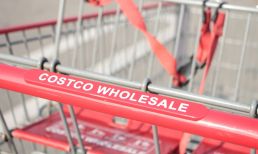Increasingly, consumers expect to be able to have their food needs met when they want, where they want. The expectation of on-demand convenience has grown so dramatically that many consumers now purchase from same-day restaurant and grocery aggregators every day of their life.
Daily use is on the rise, according to data from the May edition of PYMNTS’ ConnectedEconomy™ Monthly Report, which drew from a survey of more than 2,600 U.S. consumers. The study revealed that the share of consumers using same-day grocery aggregators, such as Instacart, daily rose 36% in April, growing from 4.7% to 6.4%.
Read more: 19M More Consumers Went Online to Bank, Buy and Pay Bills in May 2022
In other words, about one in 16 consumers now orders groceries to be delivered on demand every day, up from about one in 21, and these consumers mark a dramatic departure from the time when grocery shoppers would get the bulk of their food needs met in their weekly trip to the store. For these daily customers, the time of pre-planning meals is in the past.
This trend is certainly different from insiders’ early pandemic expectations of how the outbreak would change consumers’ habits.
“In 2020, we saw consumers doing three or four times more activities in the digital world than they did in the physical one: shopping and ordering food from grocery stores and restaurant aggregators online, working remotely, streaming videos and hanging out more with family and friends on social networks,” PYMNTS’ Karen Webster observed last month. “Yet, no one expected, nor should they have, that consumers would stay pinned to the max to those COVID-created digital-only behaviors when the world reopened, when consumers were vaxxed and boosted and as the pandemic receded.”
Advertisement: Scroll to Continue
See more: RIP Digital Transformation, We Hardly Knew Ya
Moreover, it is not just these daily users who have been making more purchases from same-day grocery aggregators. The study found that the share of consumers using these aggregators not daily but weekly rose 25%. Plus, the share using them not weekly but monthly rose 14%.
Additionally, the growth in daily use of grocery aggregators is outpacing the growth in daily use of their restaurant aggregator counterparts. The study found that daily use of services such as DoorDash and Grubhub increased 15% in April, and monthly use increased 21%. Similarly, overall use increased 7%. Overall adoption of these channels surpasses adoption of grocery aggregators, however, with 43% of consumers ordering from restaurants for same-day delivery via third-party aggregator and only 34% doing so from grocery stores.
This adoption of digital third-party channels does not mean restaurant and grocery customers are eschewing in-store and online direct ordering options. On the contrary, many of today’s consumers specifically want to be able to engage with brands across as many channels as possible.
In an interview with PYMNTS’ Karen Webster, Andrew Robbins, CEO of Software-as-a-Service (SaaS) customer experience management (CXM) solutions provider Paytronix, noted that not only have consumers returned to indoor dining at restaurants, but many also continue to order online for off-premises consumption and outdoor dining options.
“I think the biggest surprise to me is the fact that people embrace so many different ways of interacting with a brand,” he said. “It’s that omnichannel, that multiplicity.”
Read more: Data Dives Help Restaurants Deliver ‘Soup to Nuts’ Customized Experiences




